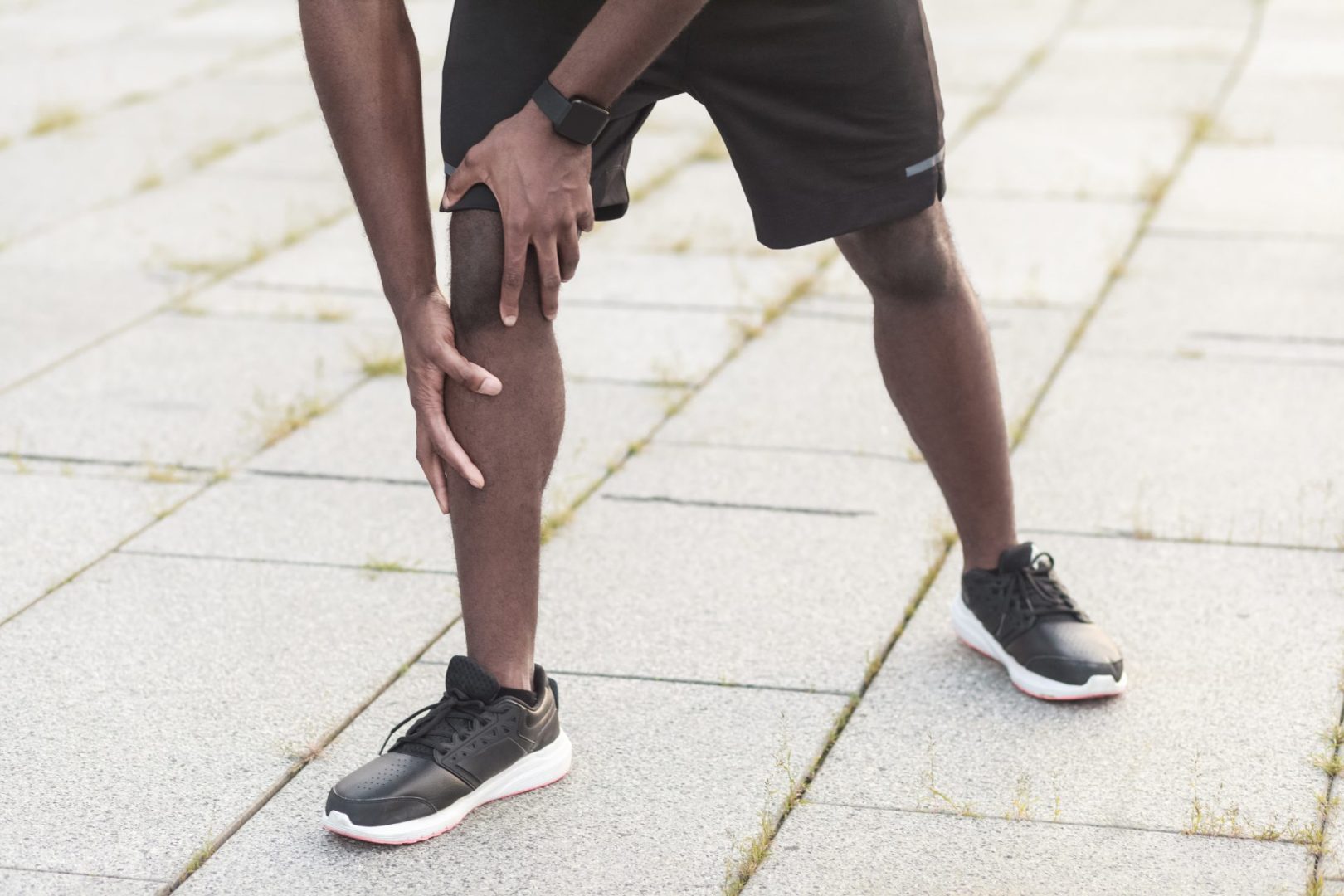That mysterious purple mark appearing on your arm without any memory of bumping into something might seem like a minor annoyance, but when bruising becomes frequent and unexplained, it could signal a serious underlying condition affecting your blood. Leukemia, a type of blood cancer that affects the bone marrow’s ability to produce healthy blood cells, often announces its presence through changes in how easily bruises form and heal.
The connection between easy bruising and leukemia lies in the disease’s impact on platelet production and function. These tiny blood components play a crucial role in clotting and preventing bleeding under the skin. When leukemia disrupts normal blood cell production, the resulting platelet deficiency creates a cascade of symptoms that extends far beyond simple bruising.
Understanding the difference between normal bruising and leukemia-related bruising could mean the difference between early detection and delayed diagnosis. The subtle signs that distinguish dangerous bruising from everyday bumps and accidents often go unrecognized, allowing this serious condition to progress without proper medical attention.
The blood connection behind mysterious bruises
Leukemia fundamentally alters the bone marrow’s ability to produce healthy blood cells, creating an overproduction of abnormal white blood cells while simultaneously reducing the production of other essential blood components. This imbalance directly affects the body’s ability to prevent bleeding and form proper clots when blood vessels break.
Platelets, the blood components responsible for clotting, become significantly reduced in both number and function when leukemia takes hold. These microscopic disc-shaped cells normally rush to injury sites to plug holes in blood vessels, preventing bleeding and bruising. When platelet counts drop or platelets fail to function properly, even minor impacts can cause extensive bleeding under the skin.
The abnormal white blood cells produced in leukemia can also interfere with normal blood vessel integrity, making vessel walls more fragile and prone to breaking. This double impact of reduced clotting ability and weakened blood vessels creates the perfect conditions for extensive, unexplained bruising that characterizes many leukemia cases.
Blood flow patterns change when leukemia affects circulation, potentially causing blood to pool in certain areas or creating pressure changes that contribute to spontaneous bleeding under the skin. These circulation changes can make bruises appear in unusual locations or patterns that don’t correspond to typical injury sites.
1. Bruises that appear without any injury
The most concerning type of bruising occurs spontaneously, with no memory or evidence of trauma that could explain the mark’s presence. These mysterious bruises often appear overnight or develop gradually without any triggering incident, indicating that normal activities are causing bleeding that shouldn’t occur.
Spontaneous bruising typically appears on areas of the body that experience minimal daily trauma, such as the torso, upper arms, or inner thighs. Finding bruises in these protected areas suggests that the blood’s clotting mechanism has become compromised enough that normal movement and minor pressure can cause bleeding.
The size and intensity of unexplained bruises often exceed what would be expected from forgotten minor bumps or accidents. These bruises may be larger, darker, or more painful than typical injury-related marks, reflecting the underlying blood abnormalities that make even minor trauma more significant.
Multiple unexplained bruises appearing simultaneously or in succession indicate a systemic problem rather than isolated incidents. This pattern suggests that the body’s clotting system has become generally compromised, making bruising a consistent rather than occasional occurrence.
2. Bruises that take excessive time to heal
Normal bruises follow a predictable healing pattern, gradually changing colors from red to purple to yellow as the body reabsorbs leaked blood. Leukemia-related bruises often remain darker for extended periods, sometimes weeks longer than typical healing timeframes would suggest.
The prolonged healing occurs because the same blood abnormalities that caused the initial bruising continue to interfere with the body’s repair processes. Reduced platelet function affects not only initial clotting but also the ongoing repair of damaged blood vessels, extending the time needed for complete healing.
Some leukemia-related bruises may appear to heal partially before becoming darker or more prominent again, reflecting the ongoing battle between healing processes and continued blood cell dysfunction. This cyclical pattern of improvement followed by worsening distinguishes leukemia bruising from normal injury recovery.
The areas around slow-healing bruises may develop additional discoloration or swelling that persists long after the initial injury should have resolved. This extended inflammation reflects the body’s struggle to complete normal healing processes when blood components aren’t functioning properly.
3. Unusually large or dark bruises from minor impacts
When small bumps or gentle contacts result in extensive bruising, it indicates that the body’s protective mechanisms have become severely compromised. A light bump against a door frame that normally wouldn’t leave any mark might create a large, dark bruise that spreads well beyond the impact site.
The intensity of color in these disproportionate bruises often appears more severe than the triggering incident would warrant. Instead of light purple or blue marks, leukemia-related bruising tends toward deep purple, black, or red coloration that reflects more significant bleeding under the skin.
Bruise boundaries may appear irregular or spreading, rather than contained to the specific impact area. This spreading pattern occurs when compromised blood vessels continue to leak after the initial trauma, creating larger affected areas than normal clotting would allow.
The pain associated with these oversized bruises often exceeds what the minor triggering incident should produce, reflecting the more extensive tissue damage that occurs when blood can’t clot effectively to limit bleeding.
4. Bruising in unusual body locations
Leukemia-related bruising frequently appears in areas that typically don’t bruise easily, such as the back, chest, or upper arms. These locations are naturally protected from most daily impacts, making bruises in these areas particularly concerning when they appear without explanation.
Facial bruising without corresponding trauma represents a significant warning sign, as the face has good blood supply and typically heals quickly from minor injuries. Unexplained bruises around the eyes, cheeks, or jawline suggest serious underlying blood disorders that require immediate attention.
Bruising on the palms of hands or soles of feet indicates severe clotting problems, as these areas have thick skin and robust blood supply that normally prevents easy bruising. When these protected areas show unexplained discoloration, it suggests advanced blood cell dysfunction.
Internal areas that show bruising, such as inside the mouth or on gums, indicate that bleeding is occurring in locations where minor trauma is unlikely. These internal bruises often appear as dark spots or patches that develop without any identifiable cause.
5. Petechiae accompanying larger bruises
Petechiae are tiny red or purple spots that appear when small blood vessels break under the skin, creating pinpoint bleeding that looks like a rash of small dots. When these tiny spots appear alongside larger bruises, they indicate widespread problems with blood vessel integrity and clotting function.
Unlike typical rashes that may be raised or itchy, petechiae appear flat against the skin and don’t fade when pressed. This characteristic helps distinguish them from other skin conditions and identifies them as bleeding-related rather than inflammatory or allergic reactions.
The distribution of petechiae often follows patterns that reflect increased pressure or minor trauma, appearing heavily on the lower legs, feet, or areas where clothing fits tightly. This pattern suggests that normal daily pressures are sufficient to cause bleeding when clotting function is compromised.
Petechiae may appear in clusters around larger bruises or may develop independently in areas that haven’t experienced any obvious trauma. Their presence alongside easy bruising creates a compelling picture of systemic bleeding problems that warrant immediate medical evaluation.
6. Bleeding that accompanies bruising
When bruises are accompanied by other forms of bleeding, such as nosebleeds, bleeding gums, or unusually heavy menstrual periods, it suggests comprehensive problems with the blood’s clotting system. This combination of symptoms indicates that bleeding problems extend beyond just bruising under the skin.
Nosebleeds that occur frequently or are difficult to stop may accompany easy bruising in leukemia cases, reflecting the same platelet problems that cause skin bleeding. These nosebleeds often occur without provocation and may be more severe than typical seasonal or dry air-related bleeding.
Gum bleeding during routine tooth brushing or eating may increase significantly when leukemia affects platelet function. The gums may appear swollen, tender, or prone to bleeding with minimal contact, indicating that even normal daily activities can trigger bleeding.
Heavy or prolonged menstrual bleeding that represents a change from normal patterns may accompany easy bruising in women with leukemia. This increased bleeding reflects the same clotting problems that cause skin bruising, but manifests through normal monthly cycles.
7. Fatigue and weakness with bruising
The combination of easy bruising with persistent fatigue and weakness creates a particularly concerning symptom pattern that may indicate leukemia’s impact on multiple blood cell types. While bruising reflects platelet problems, fatigue often results from anemia caused by reduced red blood cell production.
This fatigue typically feels different from normal tiredness, persisting despite adequate rest and affecting the ability to perform routine activities. The exhaustion may worsen gradually over time, corresponding with the progression of blood cell abnormalities that also cause increased bruising.
Weakness may be particularly noticeable during physical activities that were previously manageable, such as climbing stairs or carrying groceries. This declining stamina often develops alongside increasing bruising frequency, creating a pattern of overall health deterioration.
The combination of physical weakness and visible bruising can create a cycle where increased clumsiness due to fatigue leads to more frequent minor injuries, which then cause more extensive bruising than they should due to underlying blood problems.
8. Swollen lymph nodes with bruising patterns
Enlarged lymph nodes, particularly in the neck, armpits, or groin, may accompany easy bruising in leukemia cases. These swollen nodes often feel firm and painless, distinguishing them from the tender, painful swelling associated with infections.
The timing of lymph node swelling relative to bruising changes can provide important clues about underlying conditions. When both symptoms develop around the same time period, it suggests a systemic condition affecting multiple body systems rather than isolated problems.
Lymph node enlargement that persists for weeks without signs of infection, combined with increasing bruising tendency, creates a symptom pattern that strongly suggests blood-related disorders requiring immediate medical evaluation.
The size and location of swollen lymph nodes may correspond with the severity and frequency of bruising symptoms, as both reflect the progression of abnormal blood cell activity throughout the body’s systems.
Distinguishing leukemia bruising from other causes
Several characteristics help differentiate leukemia-related bruising from other common causes of easy bruising, such as age-related changes, medication effects, or nutritional deficiencies. Leukemia bruising typically appears more suddenly and severely than gradual changes related to aging or lifestyle factors.
The pattern and timing of bruise appearance often differs significantly from medication-related bruising, which typically develops gradually after starting new treatments. Leukemia bruising may appear suddenly and worsen rapidly, even without medication changes.
Nutritional deficiency-related bruising usually responds to dietary improvements or supplementation, while leukemia-related bruising continues to worsen despite good nutrition and general health maintenance efforts.
The accompanying symptoms that occur with leukemia bruising, such as fatigue, frequent infections, or unexplained weight loss, help distinguish it from isolated bruising problems that don’t affect overall health and energy levels.
When to seek immediate medical attention
The combination of easy bruising with any other unexplained symptoms, such as persistent fatigue, frequent infections, or unexplained weight loss, warrants prompt medical evaluation. These symptom combinations suggest systemic conditions that require professional diagnosis and treatment.
Bruising that appears suddenly and worsens rapidly over days or weeks indicates a need for urgent medical assessment, particularly when accompanied by other bleeding symptoms like nosebleeds or gum bleeding.
Any significant change in bruising patterns, especially when bruises become larger, darker, or more frequent without corresponding increases in injury risk, should prompt medical consultation to rule out serious underlying conditions.
The presence of petechiae along with easy bruising represents a particularly concerning combination that suggests serious blood disorders requiring immediate medical attention and potentially emergency evaluation.
The importance of early detection
Recognizing the warning signs of leukemia-related bruising enables earlier diagnosis and treatment, which can significantly improve outcomes for this serious condition. Early-stage leukemia often responds better to treatment than advanced cases, making symptom recognition crucial for optimal health outcomes.
The subtle nature of early leukemia symptoms means that many cases go undiagnosed until the condition has progressed significantly. Understanding how bruising patterns can signal blood cancer empowers individuals to seek appropriate medical care before symptoms become severe.
Documentation of bruising patterns, including photographs and notes about timing and associated symptoms, can help healthcare providers make accurate diagnoses and develop appropriate treatment plans.
The combination of increased awareness about leukemia warning signs with prompt medical attention when concerning symptoms develop represents the best strategy for early detection and successful treatment of this serious blood cancer.

















